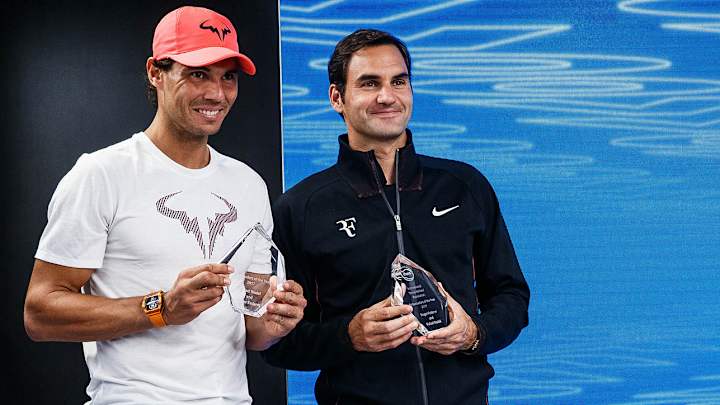Rafael Nadal vs Roger Federer in Indian Wells Semifinal Adds Another Entry to the Storied Rivalry

There is nothing new under the sun, and that’s deeply comforting for tennis fans. As everyone from 3-year-old children to Oracle CEO/Indian Wells owner Larry Ellison wanted when the draw came out, Roger Federer will play Rafael Nadal in the semifinals of the BNP Paribas Open on Saturday. As long as Nadal’s right knee holds up—he tweaked it during his straight sets win over Karen Khachanov—it will mark the 39th time that the two champions, with 37 majors between them, face off.
Federer vs. Nadal is men’s tennis’ never-ending story. As long as the sport of tennis exists, people will talk about what this rivalry meant. Next week, the pair will celebrate the 15th anniversary of their first meeting at Miami in 2004 (note: 10 days after this author’s 7th birthday). Many things have changed since their last meeting in Shanghai 2017, a dominant 6-4, 6-3 Federer win. Novak Djokovic missed that tournament with an injury—today, he holds the last three Grand Slam titles. Federer won the Australian then imploded against Kevin Anderson, John Millman and Stefanos Tsitsipas in the next three majors. After winning the French Open again, Nadal was excellent on hardcourts until an ankle injury and surgery kept him out until this year’s Australian Open.
Frankly, none of the results matter in the lead-up to this semifinal, except for both players’ injury concerns. Federer vs. Nadal transcends the sport itself. The primary question casual tennis fans ask when discussing a tournament is: “are Nadal and Federer playing?”. The prize money, ranking points or recent form are somewhat irrelevant at this point in the rivalry (which Nadal leads, 23-15). Even if the match’s quality is somewhat mediocre, like it was in their last three meetings, is anybody going to be nitpicking tactics and mentality after 15 years? With Father Time slowly arriving, every remaining meeting between the two is a gift to be savored.
The Swiss has won the last five meetings, a remarkable turnaround given Nadal’s dominance over Federer in the late 2000s and 2010s. Both players have had spells of alarming vulnerability and encouraging brilliance since that Shanghai match. After a disappointing 10 months, by his lofty standards, Federer has been impeccable since the Dubai quarterfinals last month. Nadal looked unbeatable himself until Djokovic crushed him in the Australian Open final. While Rafa’s hardcourt results are still iffy (see: his loss to Kyrgios in Acapulco), he had no trouble stomping his way through to the semis at Indian Wells.
For those hoping for any fresh blood at the top of men’s tennis, recent results haven’t been encouraging. This week, the Next Gen (1.0 and 2.0) has continued to act like Star Wars stormtroopers, missing every important shot and acting completely befuddled as their efforts bounce harmlessly into space. Yes, Djokovic lost, but it was to 35-year-old Philipp Kohlschreiber. Federer and Nadal brushed aside the likes of Kyle Edmund, Hubert Hurkacz, Filip Krajinovic and Khachanov (hurt knee and all) en route to Federer vs. Nadal XXXIX. After watching heir presumptives like Alexander Zverev lose 6-4, 6-1 to Jan-Lennard Struff, you’d be forgiven for wondering what’s taking the youngins so long.
The result on Saturday will inevitably become another data point in the “greatest of all time” conversation. For those interested, the big stats currently sit like this: 20-17 Federer in Grand Slam titles; 33-27 Nadal in Masters 1000s; 100-80 Federer in total ATP titles. Djokovic is close behind with 15 Slams, 32 Masters and 73 titles overall... and he enjoys head-to-head advantages over both.
Federer, Nadal and Djokovic are just better. They are tennis’ eternal golden braid, seemingly endless sources of must-watch events and life-altering highlights. So, just enjoy this, alright?
It’s Federer vs. Nadal, what more do you need to hear?
